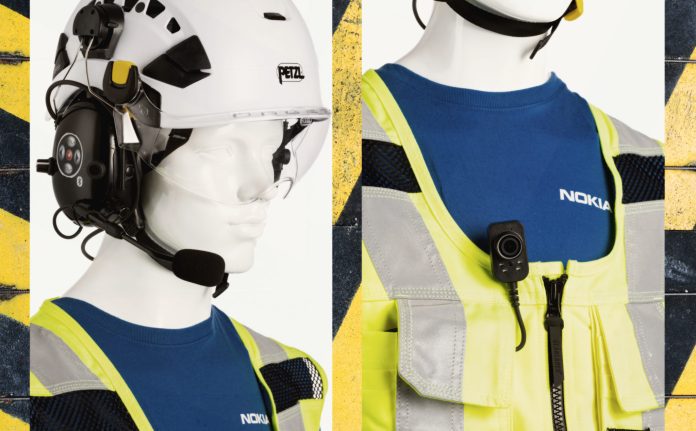Nokia has released a glut of industrial 5G devices for deployment by enterprises, typically engaged in hard-nosed Industry 4.0 disciplines, in private 5G networks. The new products include an AI-laden video camera for various quick-time industrial analysis, wearable cameras for site surveillance and staff comms, plus a range of handheld remote speaker microphones and noise-cancelling and helmet-compatible headsets.
The Finnish vendor, which has grown frustrated with a lack of industrial 5G devices in the market, and a radio-silence from silicon vendors about the release of industrial 5G chips, has effectively re-started as a devices brand, of late, with a focus on the Industry 4.0 sector. It is targeting manufacturing, mining, and public safety to start with, as prime Industry 4.0 candidates for its new line of products, which will be on show at Hannover Messe next week.
It has announced a new partnership with country-mate Savox Communications, which makes wireless devices for mission-critical industries. Its new line of 5G accessories, including the speaker microphones and industrial headsets, are from Savox, and certified for usage in harsh industrial environments. “First responders, mining engineers, and others… [can] communicate without having to remove protective equipment and hear in noisy locations,” said Nokia.
The new Nokia-branded 5G camera supports “low light performance”, and delivers live machine vision analytics for face recognition, object detection, defect detection, road signs and incidents, and driving behaviour, as prescribed by various industry users. The wearable cameras come with optional push-to-talk (PTT). As well, Nokia has introduced a network digital twin product to provide a live picture of network performance and a simulation of network impacts.
A statement said: “[It] allows the enterprise to ensure network SLAs are maintained [and] recommends actions… in case of sub-optimal performance. This will enhance planning capabilities as future scenarios can be tested without impacting the current environment… [–] particularly important for new industrial use cases that… URLLC and TSN will enable. This will allow enterprises to flexibly re-configure their operational space to meet their business needs.”
Nokia’s industrial devices play is significant. At MWC a couple of months back, Enterprise IoT Insights caught up with Stephane Daeuble, the company’s enterprise marketing chief; during the conversation, he picked up a tough-looking Nokia-branded handset, and whacked (hard) it on the corner of the desk. The handset, the new Nokia X20 model, remained intact, and Daeuble looked up as if to say, ‘Impressed?’
He explained: “It’s a military-spec device that looks like a normal phone with a physical push button – so, when you’re wearing gloves, you can do PTT and video calls. All devices are pre-tested and pre-loaded. So when you buy the network, you also get the device.” Nokia has engaged local Finnish OEM partner HMD because its private LTE/5G customers cannot find any decent Industry 4.0 handsets anywhere else.
Next to him, on the desk, there is an industrial 5G router, as well (which he does not whack on the desk.) The router works with sundry industrial layer-two protocols, such as Ethercat and Profinet. “Because, like we know, devices are a problem – enterprises have the networks, but not the devices,” said Daeuble at the time. For now, the new wave of industrial cellular looks to have also offered Nokia a chance to remake itself as a devices brand again.
Nokia is offering its portfolio of ruggedised and optimised industrial 5G devices with its Digital Automated Cloud (DAC) and Modular Private Wireless (MPW) private network systems, respectively, for easy cloud-based micro-sized and hard-core macro-sized LTE and 5G networks, as well as with its broader MX Industrial Edge (MXIE) platform, which brings in sundry edge componentry and industrial IoT apps.
Valtteri Seraste, strategic sales at Savox, commented: “We have a long history of collaborating with professionals who work in harsh and demanding locations; therefore, we have a real understanding of their needs. We are laser focused on delivering innovative end-user dedicated solutions. With Nokia we can now offer our wearable devices to even more users, help improve their safety, and enhance team communication with durable and robust solutions.”
Shkumbin Hamiti, head of devices and spectrum (for enterprise solutions, cloud and network services) at Nokia, said: “Nokia is committed to continually enhancing our private wireless and expanding our ecosystem through partners to meet the many diverse and complex challenges that our customers face. We are pleased to introduce our new digital twin capabilities for private wireless and work with Savox to deliver solutions that meet the needs across industries.”

